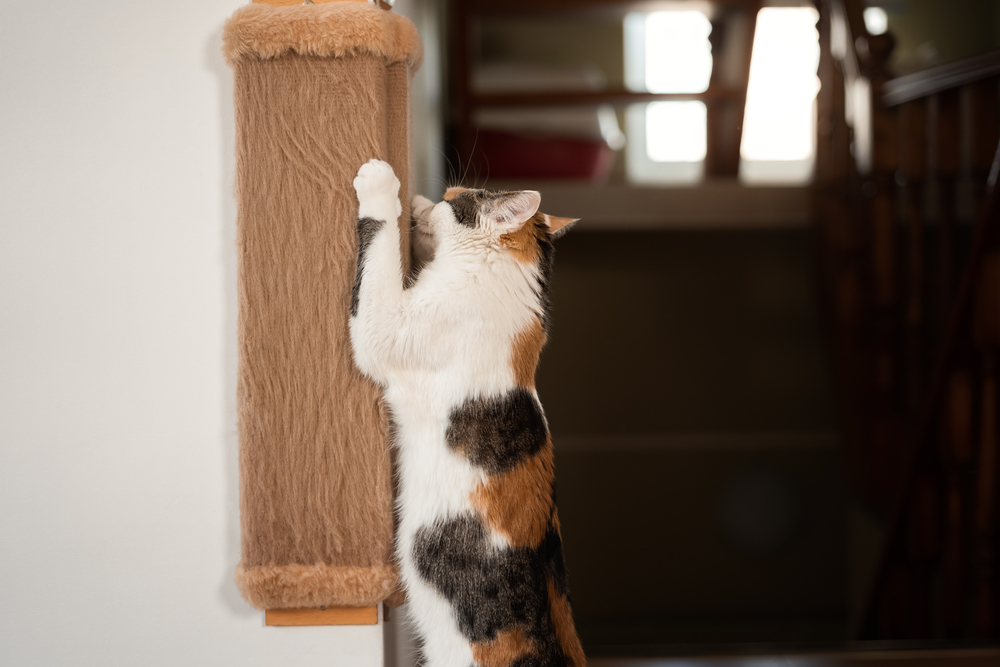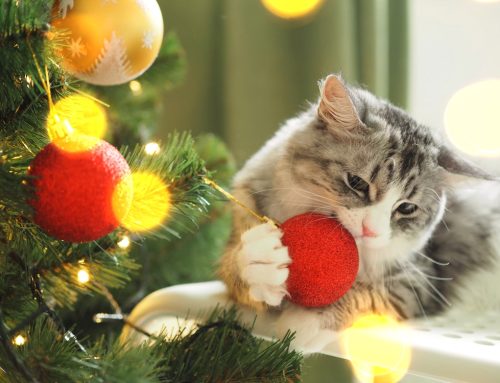While cat scratch fever does not refer to your cat’s burning desire to scratch and claw, they certainly crave a good scratching session. Scratching is an ingrained cat behavior that is developed by replicating an adult cat’s actions, and suppressing this natural instinct can lead to an emotionally distressed and physically unhealthy cat.
To help your feline friend live their best life, our Star of Texas Veterinary Hospital team has compiled a list of key facts about your cat’s scratching. Read on for critical information you must know about the importance of scratching for cats.
#1: Scratching helps keep your cat’s body healthy
A house cat’s lifestyle typically is rather sedentary, especially compared with their wild counterparts, so ample scratching opportunities are a must for maintaining a healthy body weight. Scratching allows your cat to stretch and flex muscles and joints, limbering them up for a vigorous play session or a case of the zoomies.
Scratching also gives your cat a way to care for their nails. Regular scratching on appropriate surfaces removes frayed nail fragments that can cause discomfort when the claw retracts back into the pad.
Placing scratching surfaces near your cat’s resting areas encourages them to stretch and scratch in appropriate spots when they wake.
#2: Scratching serves as a communication method for cats
Did you know that cats generally meow only to communicate with their human family members? Cats rarely meow to “speak” with other cats, and instead largely rely on body language and pheromone scent marking. Your scratching cat deposits pheromones from glands on their paw pads to communicate a wealth of information, such as their health status, mating prospects, and territorial boundaries. Pheromones can also instill comfort and peace in your cat, since the area smells of familiar territory. Scratching also leaves behind the cat’s claw marks as visual markers to reinforce the message.
To encourage your cat to scratch appropriately to communicate, place scratching surfaces near doorways and windows, the two areas where stray cats may come and threaten your cat.
#3: Scratching boosts your cat’s mental health and wellbeing
A cat with no physical and mental outlet for their energy can easily become bored, which can result in assorted health and behavioral issues. Therefore, you should cater to their instinctive needs by providing a variety of appropriate scratching surfaces for environmental enrichment. In your cat’s mind, a good scratching session prepares them for a hunt, warns off intruders, attracts a mate, or sharpens their defenses.
Placing tall climbing towers with scratching posts and hideouts near windows overlooking bird feeders and baths is an excellent way to fulfill many of your cat’s enrichment needs.
#4: Each cat has their own scratching surface preference
While every cat is a unique individual and your cat may prefer a specific scratching surface, the majority of the feline population has similar preferences. Typically, cats prefer to scratch sisal surfaces at least one and a half times their outstretched height or length. Other popular surfaces include corrugated cardboard, wood, and carpet fabric.
#5: Use a variety of ways to attract your cat to an appropriate scratching surface

Inappropriate scratching can damage your bond with your cat, especially if they decide to scratch your brand-new furniture or rug. Fortunately, you can encourage your cat to scratch appropriate objects in a multitude of ways, including:
- Using pheromones — Pheromone sprays can promote happiness and calm in your cat, who may be inclined to rub up against or scratch surfaces coated in pheromones to deposit their own scent markers.
- Using catnip — Depending on your cat’s reaction, catnip sprinkled on a surface can attract your cat to a scratch.
- Considering placement — Correct scratching surface placement will go a long way toward dissuading inappropriate scratching. Consider the suggestions above for why and where your cat scratches to determine the best placement for scratching surfaces.
- Ensuring stability — No cat wants to scratch a wobbly cat tower that topples over. Ensure scratching posts and towers are stable and secure.
- Offering variety — Cats who have a wide variety of textures and positions to scratch will more likely scratch acceptable objects.
Sudden, inappropriate scratching can signal an underlying health or behavioral issue in your cat. If your feline friend begins acting out by scratching out, schedule an appointment with our Star of Texas Veterinary Hospital team.






